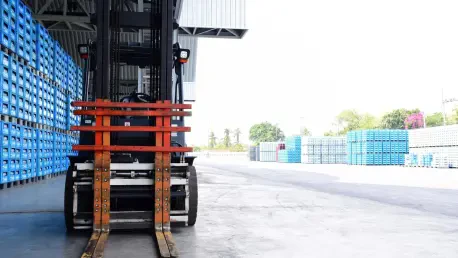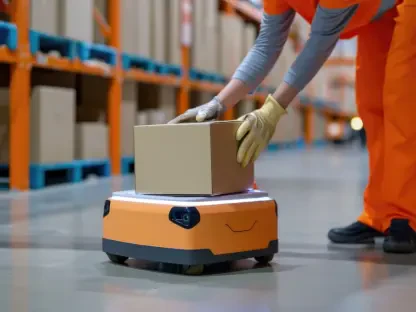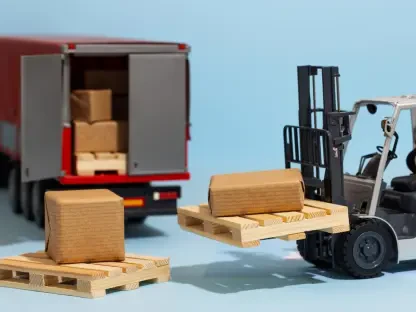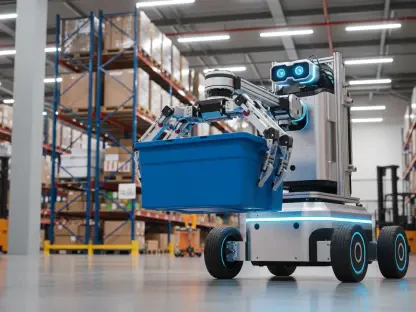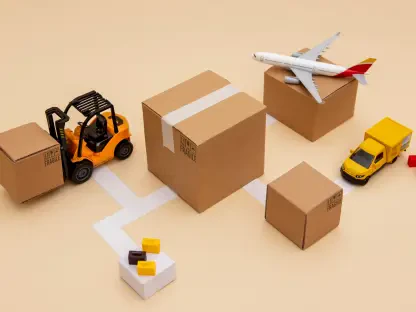In a fast-paced world where logistics and supply chain efficiencies are vital, outdoor loading solutions emerge as a revolutionary advancement. As companies strive to optimize their operations, the demand for reliable, adaptable, and weather-resistant loading and unloading facilities has never been more pressing. Addressing these needs, the collaboration between Thorworld Industries and HTS TENTIQ fills a critical gap, enabling seamless, efficient outdoor logistics operations and ensuring continuity despite environmental challenges.
Examining Core Features and Operations
Thorworld and HTS TENTIQ’s innovative outdoor loading solutions combine modular loading platforms with advanced canopy systems, providing comprehensive benefits for logistics. Modular platforms offer flexibility and scalability, enabling businesses to adjust configurations as demands fluctuate. Their robust design guarantees stability for a variety of goods, ensuring efficiency even under challenging circumstances. When integrated with HTS TENTIQ’s canopy solutions, these systems shield workers and goods from adverse weather, maintaining operational momentum and mitigating potential risks from environmental interruptions.
The seamless process begins with a coordinated approach to integration. Following a joint site assessment, both companies develop precise technical drawings that form the foundation for the project’s success. By overlaying HTS TENTIQ’s canopy designs onto Thorworld’s CAD models, a cohesive visualization is crafted, ensuring a seamless installation process. Typically, the larger canopy frame is deployed first, followed by the precision installation of Thorworld’s adaptive platforms. It results in flawless coordination that exemplifies both reliability and operational excellence.
Pioneering Innovations and Industry Trends
Recent progress in outdoor loading solutions reveals exciting developments aligning with technological advancements and shifting industry behaviors. Increased demand for efficient outdoor logistics has fueled innovation in modularity and weather-resistant capabilities, crucial for businesses navigating fluctuating climates. Notably, the trend of integrating high-tech elements, such as real-time monitoring and digital interfaces, is gaining traction, allowing enhanced oversight and streamlined operations.
Furthermore, evolving consumer and industry expectations are altering the landscape. While traditional indoor bays remain an option, the practical challenges they present have spurred a shift toward versatile, weather-protected outdoor solutions. The partnership between Thorworld and HTS TENTIQ exemplifies this industry progression, providing cost-effective and efficient alternatives to conventional loading systems, thus setting a benchmark for future endeavors.
Real-world Implementations and Success Stories
Outdoor loading solutions have found applications across diverse sectors, streamlining operations in industries such as manufacturing, distribution, and agriculture. Their adaptability makes them suitable for businesses with variable needs, from transporting raw materials to dispatching finished products. A notable real-world case could involve a manufacturing firm opting for these solutions over conventional indoor facilities, thereby avoiding complex redesign costs and maintaining operational flow regardless of weather conditions.
Another example highlights their adaptation by logistics complexes, ensuring smooth operations even during unpredictable weather periods. These implementations translate into tangible benefits—speed, efficiency, and reliability—providing companies with a vital edge in today’s competitive market. This broad applicability and proven effectiveness underscore the significant advantages that modern outdoor loading solutions bring to the logistics sector.
Overcoming Challenges and Market Barriers
Despite successes, outdoor loading solutions face challenges such as technical constraints, regulatory intricacies, and evolving market dynamics. Technical aspects like modular system integration and adaptability pose potential limitations that require innovative engineering approaches. Regulatory considerations also play a crucial role as compliance with diverse regional standards introduces complexity into system deployment.
Market barriers arise from resistance to adopting new technologies and reluctance to pivot from established processes, necessitating strategic communication of these solutions’ benefits. Addressing such obstacles requires continuous innovation and collaboration among stakeholders. Ongoing developments focus on enhancing flexibility, functionality, and compliance, all geared toward maximizing the solutions’ potential and ensuring their accessible integration into diverse operational contexts.
Future Prospects and Advancements
Looking ahead, the trajectory of outdoor loading solutions points toward promising breakthroughs. Continuous enhancements in materials, digital integration, and design are expected to redefine these systems, enabling even greater flexibility and efficiency. Future iterations might incorporate advanced AI-driven analytics, offering predictive insights and optimizing logistics processes on a broader scale.
These innovations are not just futuristic ideas but actionable possibilities that can dramatically alter logistical landscapes. As such, the logistics sector should prepare for these transformations, exploring adaptive strategies to integrate these emerging capabilities seamlessly into their operations, securing a sustainable and competitive edge.
Closing Insights
Concluding the review, outdoor loading solutions presented by the Thorworld and HTS TENTIQ partnership offer pivotal advancements to the logistics field. By blending modular platforms with weather-resistant canopies, they have redefined operational efficiency, adapting to industry needs across various scenarios. The challenges encountered along the way have been met with innovative solutions, paving the way for future enhancements. With all signs pointing to continuous development, these solutions are poised to significantly shape the logistical processes landscape, broadening their impact across sectors worldwide.
